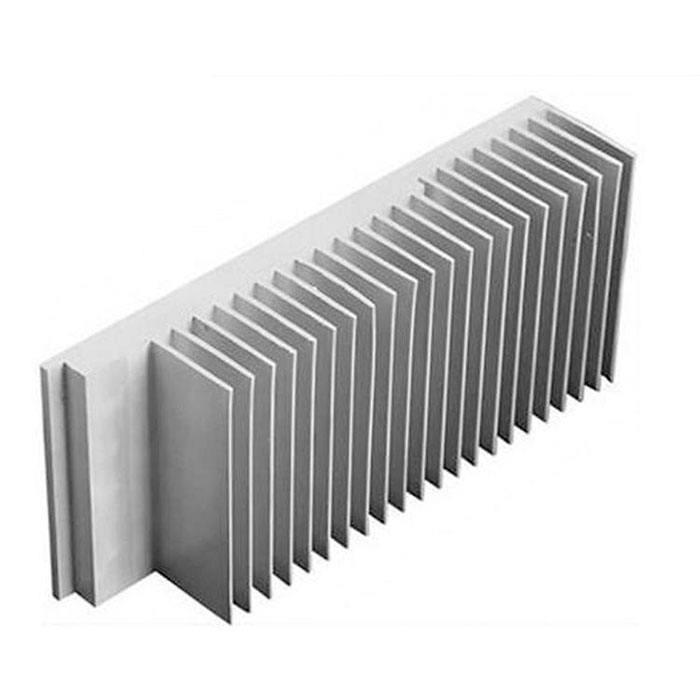Why Are CNC Machining Parts Essential for Precision Engineering?
2025-01-09
In the world of manufacturing and engineering, precision is key. Whether it's in aerospace, automotive, medical devices, or consumer electronics, the demand for high-quality, precise components is ever-increasing. This is where CNC machining parts come into play. But why are CNC machining parts so essential for precision engineering, and how do they help meet the demands of modern industries? Let’s delve into why CNC machining is crucial for producing parts that meet the highest standards of quality and performance.
What Is CNC Machining?
CNC (Computer Numerical Control) machining is a highly automated process that uses computer-controlled machinery to create complex parts with a high degree of accuracy. Unlike traditional manual machining, which requires human intervention, CNC machines are programmed with a set of instructions that dictate the exact movements of the cutting tools. The machines use various types of tools, such as lathes, mills, and routers, to cut, drill, grind, and shape materials like metals, plastics, and composites.
CNC machining is widely used across industries due to its ability to produce parts that are precise, consistent, and complex—attributes that are essential for the performance and reliability of modern products.
Why Are CNC Machining Parts Crucial for Precision Engineering?
1. High Precision and Accuracy
One of the main reasons CNC machining parts are so important is their exceptional level of precision. CNC machines can produce parts with tolerances as tight as a few microns (thousandths of a millimeter), ensuring that every component is manufactured to exact specifications. In industries like aerospace, automotive, and medical devices, even the slightest deviation from the required dimensions can result in failure or malfunction. CNC machining guarantees parts are made exactly as designed, ensuring safety, functionality, and performance.
2. Complex Geometries
CNC machining is capable of producing parts with complex geometries that would be difficult, if not impossible, to achieve with traditional manual machining methods. With multiple axes of movement (usually 3, 4, or 5), CNC machines can create intricate shapes, curves, and designs with ease. Whether it's a custom-engineered part for a new product or an intricate mold for injection molding, CNC machining allows for the precise creation of even the most complicated components.
3. Consistency and Reproducibility
CNC machining offers unparalleled consistency. Once the machine is programmed, it can produce identical parts with consistent quality, time after time. This repeatability is especially important in industries that require mass production of identical parts, such as the automotive or electronics industries. The ability to produce large volumes of high-quality parts with minimal variation helps to streamline production and reduce waste.
4. Material Versatility
CNC machines are capable of working with a wide variety of materials, ranging from metals like aluminum, steel, and titanium to plastics, wood, and composites. This versatility makes CNC machining suitable for a broad spectrum of applications, from lightweight components for consumer electronics to heavy-duty parts for industrial machinery. The precision and control offered by CNC machines ensure that different materials are processed effectively, with optimal results.
5. Automation and Efficiency
With CNC machining, the process is highly automated. Once a machine is set up and programmed, it can run continuously, reducing the need for manual labor and increasing production speed. This high level of automation not only improves efficiency but also reduces the potential for human error, ensuring that parts are made accurately and on schedule. Additionally, CNC machines can operate 24/7, further optimizing production time.
6. Reduced Waste
CNC machining is a subtractive manufacturing process, which means material is removed from a solid block to create the desired shape. The precision of the machine allows for minimal material waste, as it can cut and shape parts with exact measurements. By reducing waste and optimizing material usage, CNC machining is both cost-effective and environmentally friendly.
How Do CNC Machining Parts Benefit Different Industries?
- Aerospace: In the aerospace industry, where safety, performance, and quality are non-negotiable, CNC machining is essential for producing critical components such as turbine blades, structural frames, and engine parts. The precision of CNC machines ensures that each part meets stringent aerospace standards and regulations.
- Automotive: CNC machining is widely used in the automotive sector for producing everything from engine components and transmission parts to custom prototypes and tooling. The ability to create high-performance, durable, and precise parts is key to the industry’s success.
- Medical Devices: The medical industry demands extremely high precision, particularly for surgical instruments, implants, and diagnostic equipment. CNC machining ensures that these components are made with the utmost accuracy and reliability, which is crucial in the medical field where even the slightest error could have serious consequences.
- Electronics: The electronics industry relies on CNC machining to create components like circuit boards, enclosures, and connectors. The ability to work with fine details and tight tolerances makes CNC machining ideal for electronics manufacturing, where precision is essential.
- Defense and Military: CNC machining is indispensable in the defense sector, where parts need to meet high-performance specifications while being durable and reliable. Components for weapons systems, vehicles, and communication devices all benefit from the precision offered by CNC machines.
What Are the Different Types of CNC Machining?
CNC machining encompasses a variety of different processes that are suitable for different applications:
- CNC Milling: CNC milling uses rotary cutters to remove material from a workpiece. It is ideal for producing parts with complex geometries, slots, holes, and detailed features.
- CNC Turning: In this process, the workpiece rotates while a cutting tool is applied to shape the material. It is typically used to create cylindrical parts, such as shafts, pins, and bushings.
- CNC Grinding: CNC grinding is used to achieve a high level of precision in finishing processes, particularly for parts requiring a fine surface finish or very tight tolerances.
- CNC Electrical Discharge Machining (EDM): EDM uses electrical sparks to cut or shape metal. It’s ideal for producing intricate shapes or cutting hard metals that are difficult to machine with conventional tools.
- CNC Laser Cutting: CNC laser cutting uses a laser beam to cut or engrave materials with extreme precision. This method is often used for thin materials or parts with intricate details.
Are There Any Drawbacks to CNC Machining?
While CNC machining offers many advantages, there are a few considerations:
- High Initial Setup Costs: The initial investment for CNC machinery can be significant, especially for high-end multi-axis machines. However, the efficiency and quality they provide usually justify the cost in the long run.
- Complex Programming: Programming a CNC machine to produce complex parts can be time-consuming and requires specialized knowledge. However, with the right expertise, this is generally manageable.
- Limited by Material Type: While CNC machining can work with a wide range of materials, some materials may be challenging or costly to machine, particularly those that are extremely hard or have high melting points.
Conclusion: Why Are CNC Machining Parts Essential for Precision Engineering?
The importance of CNC machining parts in precision engineering cannot be overstated. From aerospace and automotive to medical devices and electronics, CNC machining plays a critical role in manufacturing parts that meet the highest standards of quality, precision, and performance. With its ability to produce complex geometries, ensure consistency, and reduce material waste, CNC machining is a cornerstone of modern manufacturing.



